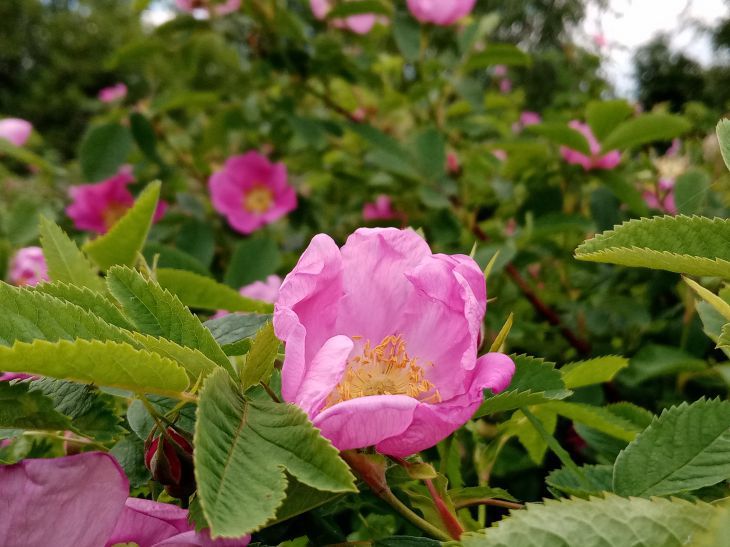Why Black Spots Appear on Rose Leaves: Causes and Methods of Control
Roses are beautiful and fragrant flowers that decorate gardens and bouquets. But sometimes they suffer from various diseases that spoil their appearance and health.
One such disease is black spot, caused by the fungus Marssonina rosae. This fungus overwinters on fallen leaves and rose shoots, and in the spring it spreads throughout the garden with the help of wind and rain.
Under favorable conditions (wet and warm weather), it attacks rose leaves, on which black or brown spots with a yellow border appear. Gradually, the leaves turn yellow, curl up and fall off.
This leads to weakening of the plant, decreased resistance to other diseases and pests, and reduced flowering.
To get rid of black spot, it is necessary to carry out a set of measures, including prevention, treatment and care of roses.

Prevention consists of the following:
• choose rose varieties for planting that are resistant to this disease;
• observe the correct selection of neighbors for roses, avoiding those plants that create too much shade or humidity;
• maintain optimal planting density of roses, ensuring good ventilation;
• remove and burn fallen leaves and damaged rose shoots;
• properly prepare roses for winter, protecting them from frost and moisture;
• Avoid watering roses in the evening or when humidity is high.
Treatment of roses against black spot can be chemical or folk.
Chemical treatment involves the use of special fungicides (anti-fungal agents) that destroy the fungus and prevent its spread. There are many such preparations, such as Topaz, Skor, Ridomil Gold, Fitosporin and others. They must be used strictly according to the instructions, observing the dosage, frequency and time of treatment. Usually, treatment begins in the spring before the buds open, and then is repeated every 10-14 days until the end of summer.
Folk treatment involves using natural remedies that have a fungicidal effect on the plant. Some of them are:
• Garlic infusion. Pour 500 g of crushed garlic with five liters of warm water. After an hour, drain the water into a separate container and pour a liter of clean water over the pulp. After an hour, combine the two solutions and add another 4 liters of water. Before each spraying, dissolve 1.5 cups of infusion in one bucket of water.
• Mullein. Dilute the mullein with water in a ratio of 1:20 and leave it to infuse for two days. Then spray the rose bushes.
• Iodine. Dilute 5 ml of iodine in 2 liters of water and treat the plants.
• Horsetail decoction. Pour 1 kg of crushed horsetail with 10 liters of cold water and leave for 24 hours. Then boil the infusion for 30 minutes over low heat, cool and strain. Before the procedure, dilute with water 1:5. Spray the bush and water the soil underneath it.
• Onion peel decoction. Pour 1 liter of dry peel into 2 liters of hot water, bring to a boil. Infuse for 2 days, strain and dilute 1:2 with water before use.
• Dandelion infusion. Grind 400 g of dandelion leaves and roots, pour in 10 liters of warm water and leave to infuse. Spray rose bushes with the strained infusion.
• In addition, you can use hydrogen peroxide, ash, Fitosporin-M and other means.
To prevent the reappearance of black spot, it is necessary to follow the rules for caring for roses, as well as regularly treat the plants with fungicides or folk remedies.
